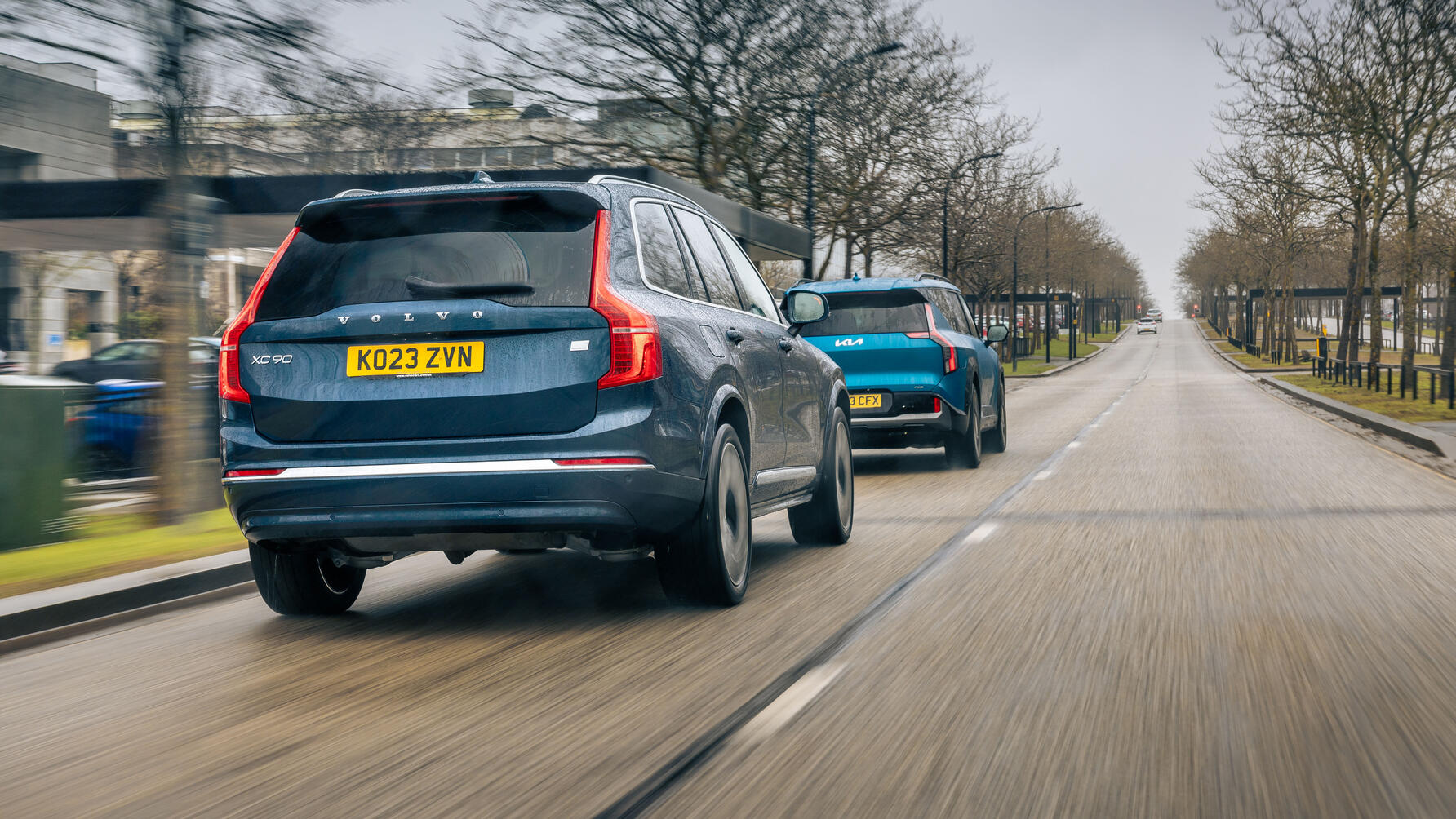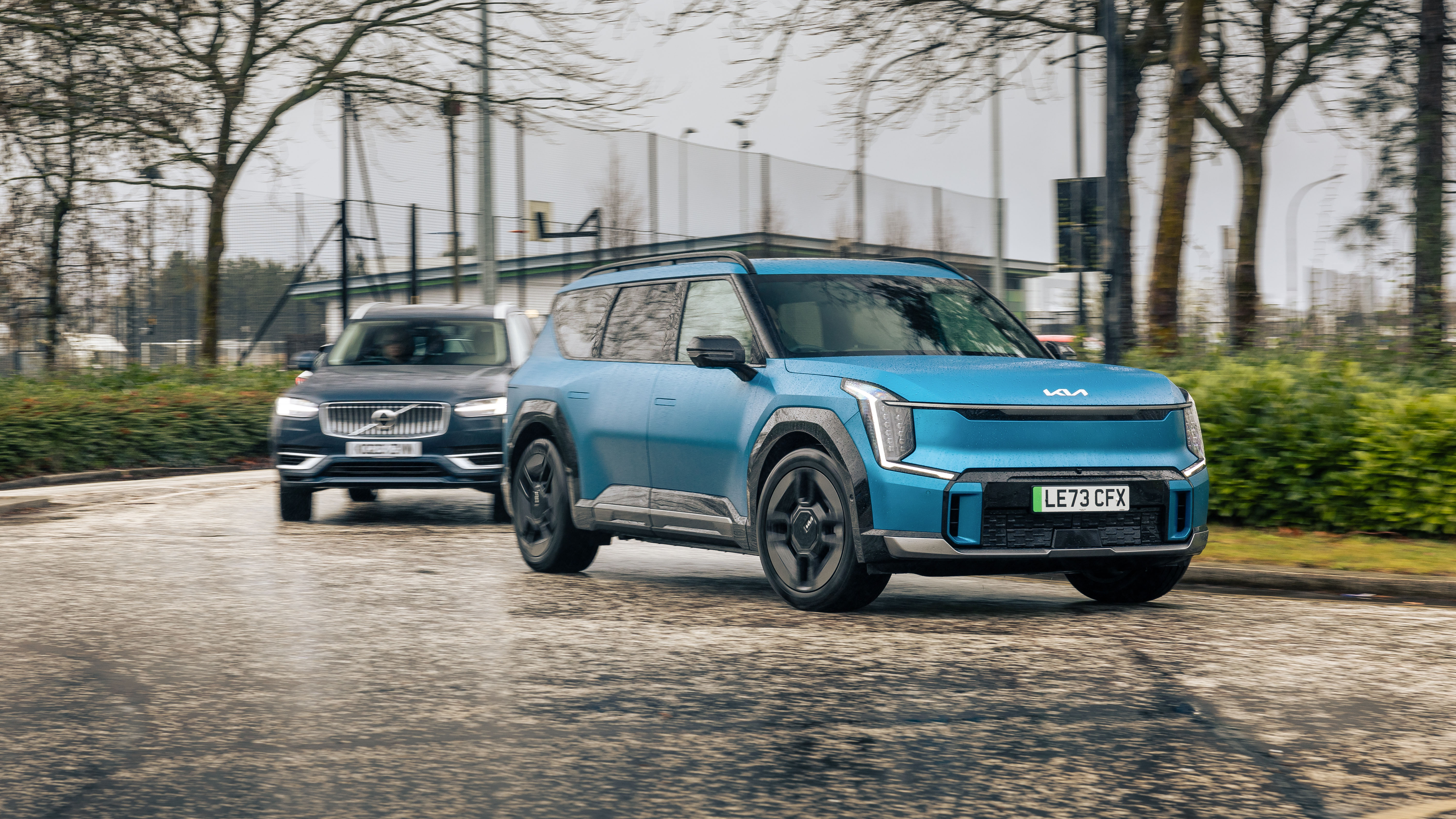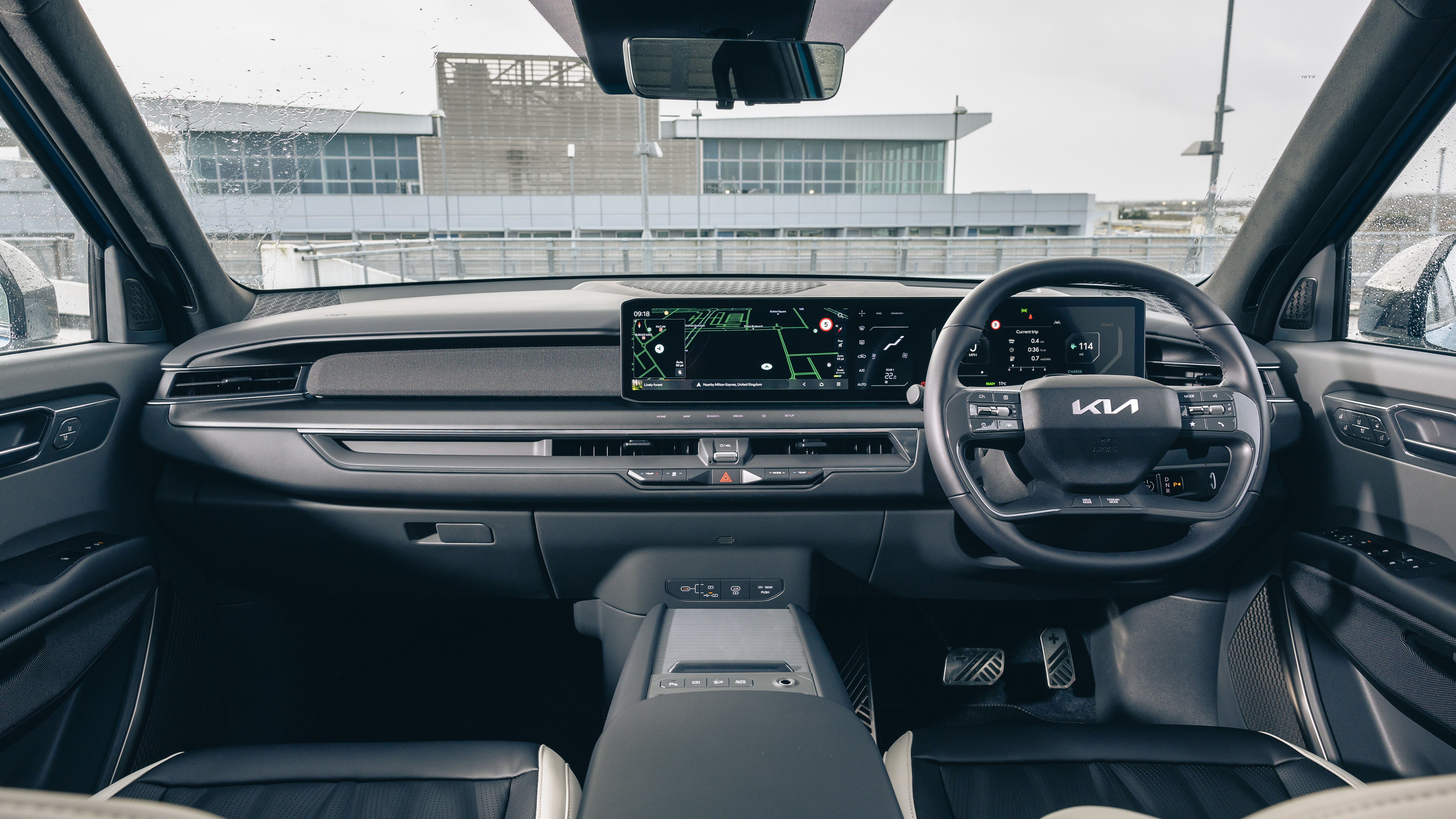
The big family SUV test: Kia EV9 vs Volvo XC90
Will the new EV9 be able to lure away some of the Volvo faithful?
It’s easy to spout simple dumb cliches about the way different cars are used or the character of their buyers. But I’m confident this is verifiable observation: the Volvo XC90 is the default car for fecund prosperous families. See these tall Scandi barges lined up outside expensive private schools, disgorging well-scrubbed well-spoken children. See them engorged with ski clobber, cruising the A40 Autoroute blanche towards the Alps come February half term.
Unsurprisingly, Volvo has no intention of giving up this territory with the arrival of the electric age. The battery powered EX90 is coming soon.
Maybe not soon enough though, because Kia has other ideas and the EV9 is here right now. Boy, you won’t miss it. It is huuuuge. It looks bigger than the Volvo although actually they’re pretty much the same size. We did this test in and around Milton Keynes, a city designed for the automobile, its wide boulevards a simulacrum for Los Angeles. (Only with rain and roundabouts.)
Photography: Jonny Fleetwood
Yet even here, negotiating car park ramps and EV charger ranks was a fraught process reliant on the surround cameras. Towns built for the horse and cart are a nightmare for XC90 or EV9. Actually for the EV9 especially because of its crazy long wheelbase. But hey, it’s not just the dimensions that get the EV9 noticed. It looks like a concept car. Chiselled, faceted surfaces and clean detailing evoke some kind of Escalade-after-next.
Pure electric propulsion won’t prevent the Kia finding itself the target of an anti-SUV backlash in circles where that matters. The Volvo – or am I backsliding from observation to cliche? – somehow mostly avoids that sort of disapproval. There’s a studied non-aggression in the big Swedish barges. It’s all about keeping the little ones safe, eh? In other words, it’s possible the Kia, a big seven-seat SUV like the Volvo, with an equally impressive array of safety kit, at the same price, is actually fishing for buyers in a different pond because of differing perceptions more than differing actualities.
But we’re here to examine them as cars, not as psychographic signifiers. They do the same job. Different propulsion, electric for the EV9 versus PHEV for the XC90 Recharge, is just another part of the rivalry.
The pair of them brilliantly meet the use case. Pile kids, their friends and grandparents into either of these and the air is thick with ooohs and aaahs. Start with the proliferation of vents, lights, cupholders and USBs. Move on to the acrobatic seats – the six-seat Kia’s middle pair even swivel to face backwards (although you can instead have a bench there). Then the tables and storage. The Volvo has an integrated pop-up booster seat. The Kia has a button that quells the stereo and switches the driver’s phone mic to a PA over the rear speakers. Endless stuff that’s either useful or at least worth playing with.
All Volvo front seats are famously terrific for long journeys. Behind them the XC90 makes room for five more adults, as long as the ones in row three are agile. It’s not easy to get in and out of there. Row two slides, to share the space, but the various levers to get the seats to do their thing need a bit of practice. The Kia’s seat folding is mostly done by electric motors, which is easier if slower.
The Kia driver’s workplace is both sensibly ergonomic and occasionally delightful. The central screen covers all the bases, and you can easily switch display modes. Between it and the driver’s portion of the display is another square touchscreen where climate is permanently displayed. Plus there are hard buttons for stuff you need in a hurry – including the surround cameras as you panic on arriving at a width restrictor. But although it’s a neat architectural shape, the dash is a bit boring in its various forms of elephant-grey plastic.
The Volvo has gone without a significant facelift in its whole nine-year life. Well, what would it do? It has a cohesion that meddling would only mess up. Sure, alongside the Kia the exterior design is a little busy and blingy, but the interior is timeless, beautiful and materially rich, especially in the light leather and ash-grey wood trim here.
One thing did get updated, mind – the screen systems switched from Volvo’s own OS to something based on Android. Mostly it works neatly, but the screen isn’t that big so lots of functions permanently displayed in the Kia – climate notably – are one level deep in the Volvo’s menus.
Top Gear
Newsletter
Thank you for subscribing to our newsletter. Look out for your regular round-up of news, reviews and offers in your inbox.
Get all the latest news, reviews and exclusives, direct to your inbox.
Given the Volvo is propelled part-time by the pressure of explosions and the Kia permanently by electromagnetic flux, it’s no surprise these two accelerate differently. The EV9 sensibly eschews the histrionic forward jolt that some electric cars deliver at the smallest tickle of the pedal. Its accelerator is progressively calibrated, for which passengers will be grateful.
But stretch your toe and away you go. The motors make 378bhp, and the scant 5.3 seconds it occupies them to get to 62mph are as undramatic to your senses as they are surprising to your expectations. The EV9’s size and weight might invite comparisons with the National Theatre, but it’s got some performance gumption. Kia is going to launch an even more “powerful and wild” GT version but that seems like sticking its neck out beyond reasonable bounds.
Kia is far enough ahead with electric vehicles in general that this is its third-gen electric propulsion system. That means a battery and charge-drive electronics that run at 800V. Which brings the possibility of very rapid replenishment if you can find the right charger – 15 minutes from a near-flat battery can net you another 135 miles of real-world driving.

But if all you can find is one of the more familiar 50kW jobs, it’ll take a couple of hours to get your 100kWh battery anywhere near topped up. It’s like having a big petrol tank for a big thirsty vehicle. Anyway, we got about 2.8mpkWh out of it and a real 250-mile range in winter – not too bad a comparison with the idealised WLTP measurement of 313 miles.
The Volvo has a decent 145bhp of motor power for its rear-mounted electric drive, and it feels just as eager as the Kia at light accelerator openings. In moderate engine-on acceleration, the motor has the happy effect of filling in for turbo lag, so the XC90 feels sprightly. The powertrain is actually pretty seamless for a PHEV, with no bad jerks or discontinuities. But when you’re going gently under electric power and suddenly floor it for the full 449bhp – say out of a tight corner or overtaking – it lets itself down in the same way PHEVs always do. For full acceleration the engine has to start and the turbo to get boosting, and the transmission to kick down. Which takes a while. In the Kia if you want full acceleration now, you press the pedal now. In the Volvo if you want it now you press the pedal a second and a half ago.
The XC90 Recharge has just under 15kWh of usable battery, mounted where the propshaft would be in a conventional 4x4. It can ingest electricity only on AC so it takes a few hours to get 44 miles’ worth of WLTP range. Call it 30–35 miles real-world and afterward you’re down at 25mpg. So if you have a home charger and commute at spot-on that electric distance without motorways, you could get 8,000 miles of EV driving a year, plus the reassuring ability to take on fuel fast during that ski trip. If you have to charge away from home, or not charge at all, the battery is a bit pointless. PHEVs... YMMV, eh.
The passage of nine years hasn’t actually been that cruel to the Volvo’s chassis dynamics. Probably because it never tried to do that modish sports-SUV thing. The setup is all about ease and stability, with no attempt to engage you. But it’s accurate enough at normal speed. You can call up a sports mode for permanent AWD, but who would? The control system still has to balance a quick-reacting rear motor against a slower-reacting front engine, so torque vectoring isn’t well-finessed. More important and useful surely is the mode for snow and mud that marries AWD with gentler accelerator and ESP maps. The XC90’s ride is a bit shuddery at times, but it settles nicely on motorways. As a 2.2-tonner should.
The EV9’s ride mostly feels like a large ship in a short swell
The Kia does remarkably well in bends given its absurd 2,640kg kerbweight. It manages to contain body float up to the point of fairly extreme duress, and that’s not a nice thing to do to six passengers anyway. As with the Volvo there’s little to no steering feel. But cornering is tidily balanced and traction stout, even in tight bends because its front/rear torque vectoring acts instantly via the two motors.
The EV9’s ride mostly feels like a large ship in a short swell – it’s so massive it gives you only the broad picture of the surface not the fine detail. Which is good. OK, OK, it’s easy to slag off either of these cars because of the bulk and mass. But at least with the Volvo – and I think we can assume the same for the Kia – the size is properly utilised. Some expensive SUVs seldom carry passengers, but these do, reducing the resource consumption per passenger to the levels of the convoying small hatchbacks you’d need to do the same job.
Neither the electric Kia or PHEV Volvo make much sense unless you have a home charger. So if you don’t, buy the alternative petrol XC90. But if you do, you and your big prosperous family will enjoy the Kia more.
1: Kia EV9 8/10
Concept-car design encloses loads of room and versatility. Excellent driver interface and plenty of 4WD performance... but monumentally massive
2: Volvo XC90 7/10
Beautiful cabin and comfy, but PHEV drive is not for everyone. A safe choice with an assured place in society
Trending this week
- Car Review
BMW iX3











